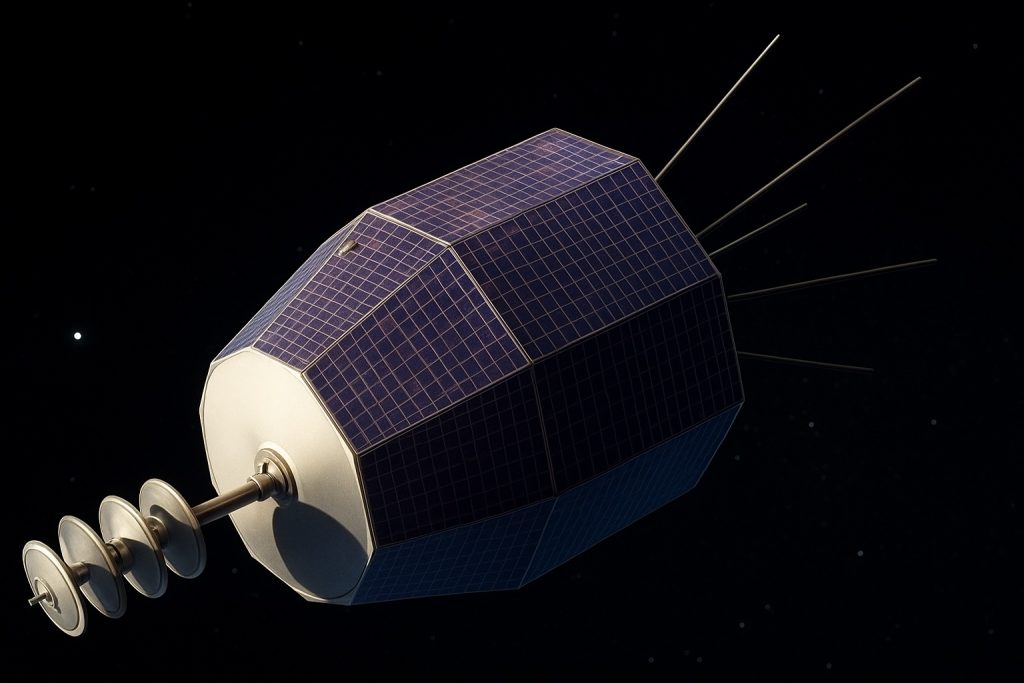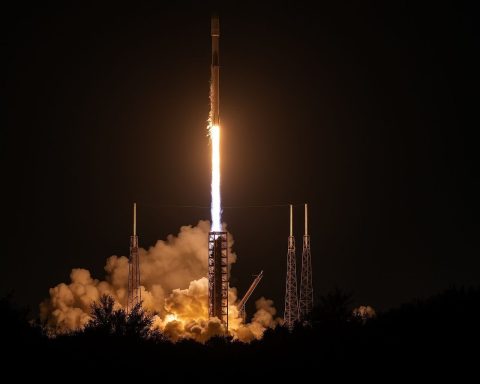- On June 14, 2025, after Israeli strikes, Iran imposed a nationwide internet blackout, and Elon Musk tweeted that Starlink was “The beams are on,” effectively activating Starlink over Iran.
- The activation made Starlink connectivity available only to users with Starlink terminals, not to the entire Iranian population.
- Estimates by late 2024 placed roughly 10,000 to 20,000 clandestine Starlink terminals operating inside Iran.
- Reuters reported in December 2022 that nearly 100 Starlink terminals were active in Iran as SpaceX began enabling Starlink there.
- By January 2025, Iran International reported up to 100,000 Iranian users benefiting from satellite internet, with official figures noting over 30,000 unique users.
- In April 2025 the ITU ruled that Starlink must not provide services within Iranian territory without authorization, while the United States said policing individual terminals was beyond ITU’s mandate.
- Black market prices for Starlink kits ranged from $700 to $2,000 and monthly fees from $70 to $110, while the average Iranian salary was about $250 per month.
- During the 2022 Ukraine invasion, thousands of Starlink terminals were deployed, with Poland alone delivering about 20,000 units.
- The Iran episode shows a private company effectively acting as a de facto foreign-policy actor by restoring connectivity during a state blackout.
- SpaceX has announced Starlink Direct-to-Cell plans for 2024–25 to connect ordinary phones directly to satellites without a ground dish.
Introduction
A recent viral report claimed that Elon Musk “bypassed” Iran’s total internet blackout by activating Starlink for 20,000 hidden satellite terminals inside the country. The dramatic story – emerging amid an escalating conflict involving Iran and Israel – suggests that Musk’s SpaceX satellites beamed uncensored internet to Iranians after the regime tried to cut off access. Given Iran’s notorious history of internet censorship and shutdowns, and Starlink’s growing reputation as a digital lifeline in crises, this claim has attracted global attention. But is it true? This report investigates all factual details of the claim using up-to-date, credible sources. We verify what actually happened in Iran in June 2025, examine whether 20,000 Starlink terminals were indeed operating clandestinely, and look for corroboration from mainstream media, officials, and tech experts. Along the way, we’ll explore related context – from Starlink’s role in other conflict zones (like Ukraine) to Iran’s internet blackouts and the broader implications for global internet freedom.
Starlink Breaks Iran’s Internet Blackout (June 2025)
In mid-June 2025, a sudden military confrontation erupted between Iran and Israel. Following Israeli airstrikes on Iranian nuclear and military sites, the Iranian government imposed a nationwide internet shutdown – a digital blackout aimed at quelling unrest and controlling information [1] [2]. On June 14, Iran’s communications ministry announced “temporary restrictions” on the country’s internet “until normalcy returns”, effectively cutting off millions of citizens from the global web [3] [4]. In the past, such blackouts left Iranians in an information void. This time, however, help came from orbit.
Elon Musk intervened within hours. The SpaceX CEO – who had previously indicated support for internet freedom in Iran – announced on social media platform X (formerly Twitter) that Starlink satellite internet service was now active over Iran [5] [6]. In a succinct June 14 tweet, Musk wrote: “The beams are on.” [7] [8] This message confirmed that Starlink’s satellites were beaming connectivity into Iran’s airspace despite the regime’s shutdown. Essentially, Musk “flipped the switch” to make sure anyone in Iran with a Starlink terminal could get online. Iranian activists had publicly appealed to Musk for help as internet access plummeted to near-zero, and he delivered. “Elon Musk said Saturday that Starlink is active over Iran, replying on X: ‘The beams are on,’” Iran International reported, noting this came after a user urged him to restore access during the blackout [9].
Crucially, Starlink’s activation did not magically reconnect every Iranian – only those with the special hardware could benefit. But it had immediate strategic effect. Reports from sources like The Times of Israel confirmed that Musk’s move provided a communications lifeline amid the blackout. By June 15, Starlink was “activated in Iran after Tehran cut off internet access to citizens in the wake of Israeli strikes”, allowing some Iranians to get back online despite the government’s efforts [10].
Iran’s blackout came during a rapidly escalating conflict. Israeli forces had struck Iranian missile launchers and nuclear facilities, and Iran retaliated with missile barrages against Israel [11] [12]. Both sides were trading attacks, raising fears of a broader war. The Iranian regime, fearful of domestic unrest or coordination, tried to “stop rebellion at home” by severing internet links [13]. Yet Musk’s Starlink undermined this strategy. By routing around terrestrial networks, Starlink allowed information to keep flowing. As NDTV reported, “Elon Musk has announced that Starlink… has been activated in Iran after Tehran imposed nationwide internet restrictions” in response to the Israeli aggression [14]. In other words, a private satellite network stepped in where traditional diplomacy or infrastructure could not, reconnecting at least a portion of Iran’s population to the outside world.
20,000 Hidden Starlink Terminals – Myth or Reality?
Central to the claim is the figure 20,000 Starlink terminals “already circulating through Iran’s black markets.” While the exact number of clandestine dishes is hard to verify, multiple credible sources support this order of magnitude. By late 2024, tech journalists and industry analysts had estimated tens of thousands of Starlink units were in use inside Iran, despite the service being officially banned. Forbes reported in December 2024 that “as many as an estimated 20,000 people have high-speed internet access [via Starlink] that is nearly impossible for the Islamic Republic to censor” [15]. This underground adoption surged after Musk first enabled Starlink for Iran in 2022. An Iran-focused outlet summarized: “Starlink’s use has surged in the last two years… Now, as many as 20,000 people [in Iran] have high-speed Internet access that is nearly impossible for the Islamic Republic to censor.” [16]. In other words, roughly 20,000 Starlink terminals were believed to be operating inside Iran by the end of 2024, largely through unofficial channels.
A clandestine Starlink dish set up in Tehran, Iran, with the iconic Milad Tower visible in the background [17]. Activists shared such photos in late 2024 as proof that Starlink terminals were indeed on the ground in Iran, despite the government’s ban. The dishes, smuggled via black markets, provided uncensored internet access that the regime struggled to shut down.
Independent reporting from Iranian diaspora media corroborates these figures. In September 2024, Iran International noted that an expert monitoring Starlink’s spread in Iran “estimates there could be between 10,000 to 20,000 terminals” already in use, based on information from merchants and technicians facilitating the smuggling [18]. By early 2025, Iranian industry officials were citing even higher numbers: over 100,000 users benefitting from satellite internet. The head of Iran’s E-Commerce Infrastructure Committee, Pouya Pirhosseinlou, told local news in January 2025 that “over 30,000 unique users are utilizing satellite internet, suggesting the total number of [Starlink] users exceeds 100,000.” [19] [20]. (This likely counts multiple people sharing each dish – for example, one rooftop Starlink serving several families – rather than 100k separate devices.) While that 100k figure has not been confirmed by external sources, it aligns with astronomical growth in 2024; the same official noted that satellite internet usage in Iran increased 20-fold that year [21]. For context, Forbes had pegged the number at 20k just a month prior [22], underscoring how rapidly the Starlink black market expanded.
What’s clear is that thousands of Starlink terminals have indeed been covertly brought into Iran since 2022. These units are often smuggled in from neighboring countries (like Iraq’s Kurdistan region, Turkey, or Persian Gulf states) because SpaceX cannot ship them legally to Iran [23] [24]. Owning one is risky – Iranian authorities consider unauthorized satellite equipment illegal, and possession can even invite espionage charges [25] [26]. In one case, Iranian security forces confiscated 22 Starlink dishes in November 2023, claiming they were CIA-provided devices for dissidents [27]. Despite these dangers, demand has boomed among tech-savvy Iranians and activists. Prices on the black market are steep: resold Starlink kits cost $700 to $2,000 (versus ~$250 retail in the U.S.), and the $70–$110 monthly subscription must be paid through complex workarounds due to sanctions [28] [29]. These costs limit Starlink access to a privileged few – a reality even Musk has acknowledged. By Iran’s standards, it’s a luxury: “(An average Iranian monthly salary is around $250),” Forbes noted, illustrating how a Starlink subscription alone equals many Iranians’ entire income [30].
So did Musk “bypass” the blackout with 20,000 terminals? In essence, yes – but indirectly. Musk’s role was to activate the Starlink signal over Iran (something he can do unilaterally via software), making service available. The physical terminals were already on the ground, stashed in homes and hideouts by enterprising Iranians. As soon as Starlink went live, those devices – however many there truly are, likely on the order of tens of thousands – sprang into action, reconnecting their users to the outside world. One industry analyst told The Economic Times that “an estimated 20,000 Starlink terminals are believed to be operating in Iran through black market channels”, which is precisely why Musk’s activation mattered [31]. Without that latent network of dishes, Starlink’s “beams” would have had no receivers. Musk essentially unlocked an underground internet waiting to be used. This aligns with the viral article’s portrayal: Starlink began beaming uncensored internet to an estimated 20,000 clandestine terminals amid the blackout [32] [33]. The numbers may not be pinpoint exact, but multiple reputable reports confirm the scale and impact.
It’s important to note that 20,000 terminals is still a tiny fraction of Iran’s population (less than 0.03% of ~85 million people). The blackout was not rendered completely ineffective for everyone – the vast majority of Iranians remained offline, with only state-controlled media available. However, those thousands with Starlink dishes suddenly became a crucial information lifeline. They could access uncensored news, communicate via social media and encrypted apps, and potentially share updates from inside Iran. In a regime that has long tried to maintain an “internet iron curtain,” this was unprecedented. Iranian officials conceded that Starlink’s arrival created new headaches. Iran’s telecom minister had earlier warned that Starlink’s uncensored service “represents a new generation of Internet access that cannot be censored by the government” [34]. Indeed, Starlink’s low-earth-orbit (LEO) satellites bypass the choke points (national ISPs and telecom hubs) that authorities normally control [35] [36]. As the viral article put it, “traditional internet censorship relies on controlling physical infrastructure… Starlink’s satellites render these control points obsolete.” [37] Iranian censors found they “couldn’t simply ‘turn off’ external satellite signals” without advanced jamming or blocking equipment [38].
Timeline of Starlink’s Involvement in Iran
To better verify the claim, it helps to see how we reached the June 2025 milestone. Below is a timeline of key events, supported by credible sources, tracing Starlink’s journey in Iran from concept to reality:
| Date | Event & Milestone |
|---|---|
| Nov 2019 | Iran imposes a near-total internet blackout during nationwide protests. Millions are cut off for about a week. (No Starlink available yet.) This foreshadows future tactics. |
| Sept 2022 | Amid mass protests after Mahsa Amini’s death, the U.S. Treasury updates sanctions to support Iranian internet freedom [39] [40]. Elon Musk tweets “Starlink is now activated in Iran”, responding to a call from US officials (like Sec. Blinken) to help Iranians stay connected [41]. Musk confirms SpaceX will seek permissions if needed [42]. |
| Oct–Dec 2022 | Starlink signals become accessible in Iran. Smuggled terminals start trickling in. Musk notes by late Dec that they were “approaching 100 Starlinks active in Iran” [43] [44]. Tehran’s telecom union claims ~800 devices had been smuggled as of Jan 2023 [45]. |
| 2023 | Underground growth: Iranian activists and diaspora groups organize to ship in Starlink kits despite risks [46] [47]. Iran’s government files an ITU complaint (Oct 2023) to declare Starlink illegal without authorization [48]. Security forces seize Starlink units and arrest users where found [49]. Nonetheless, usage quietly spreads. |
| Nov 2024 | In a surprising diplomatic twist, Elon Musk meets with Iran’s UN Ambassador in New York (reported by The New York Times). They discuss ways to “defuse tensions between Iran and the United States.” [50] This backchannel meeting – occurring as U.S. President-elect Donald Trump named Musk an adviser – suggests Musk was involved in geopolitical conversations beyond just tech. (Iran’s foreign ministry officially denied the meeting took place [51].) |
| Dec 2024 | Forbes reports ~20,000 Starlink users in Iran, thanks to a “thriving black market” and activist smuggling networks [52]. The U.S. government’s earlier green light (General License D-2) made this possible by exempting satellite internet gear from sanctions [53]. Musk’s Starlink is now a known tool for Iran’s civil society, though still unaffordable for most (resale prices ~$1k) [54]. |
| Jan 2025 | An Iranian IT official claims 100,000+ people are using Starlink or other satellite internet, indicating rapid growth [55] [56]. (Likely each terminal serves multiple users.) He warns this “drains millions of dollars in foreign currency” and undermines Iran’s controlled internet economy [57]. Meanwhile, Iran lobbies the ITU to compel Starlink to shut off service or disable unauthorized terminals. In April 2025, the ITU sides partly with Iran, saying Starlink must respect Iran’s “territorial rights” and should identify & deactivate illicit terminals in Iran [58] [59]. (The US rejected the idea of policing individual devices, calling border enforcement beyond ITU’s mandate [60].) |
| June 14, 2025 | Israel-Iran conflict erupts. Israel launches major strikes on Iranian nuclear facilities, killing military officials; Iran fires missiles at Israeli cities [61] [62]. Fearing unrest, Tehran orders a nationwide internet blackout – connectivity drops to near zero [63]. Elon Musk activates Starlink over Iran and tweets “The beams are on.” Thousands of Iranian Starlink dishes hidden in homes immediately connect, “beaming uncensored internet” past the regime’s shutdown [64] [65]. This marks the first time in history that a private satellite network undercut a state-imposed internet blackout in real time. |
| June 15–18, 2025 | Global reactions pour in. Iranian activists hail the restored connectivity but urge Musk to eliminate the hefty $100+ monthly fee so more people can use it [66] [67]. A petition titled “Elon Musk: Keep your word to the Iranian people” garners support, noting many Iranians can’t afford Starlink or lack credit cards due to sanctions [68] [69]. The Iranian regime rages at what it calls a U.S.-backed information intervention, likely stepping up efforts to locate and confiscate dishes. International commentators debate the precedent set by a tech CEO effectively countering a sovereign government’s shutdown. |
Table: Key events in Starlink’s involvement in Iran’s internet access, 2019–2025, with supporting evidence.
Government and Expert Reactions
Mainstream media and officials have corroborated the core facts of the Starlink-in-Iran story. For instance, Reuters and BBC-covered outlets reported Musk’s Starlink activation in both 2022 and 2025. In late 2022, Reuters noted Musk’s pledge to provide Starlink as part of a U.S.-backed effort to support “internet freedom and the free flow of information” in Iran during the Mahsa Amini protests [70]. By December 2022, Musk publicly confirmed nearly 100 terminals were active in Iran [71]. Fast-forward to June 2025, and multiple outlets – from The Jerusalem Post to NDTV and Reuters partners – reported that Musk had switched on Starlink in response to Iran’s shutdown [72] [73]. Iran’s state-affiliated media also acknowledged the move indirectly; the ISNA news agency carried the communications ministry’s statement about internet curbs and promised they’d lift them when order restored [74], implicitly recognizing the reason was to stifle information during the conflict.
Tech analysts and human rights groups have weighed in on the significance of Starlink’s presence in Iran. Freedom House, in its 2024 Freedom on the Net report, ranked Iran as one of the most restrictive internet environments in the world (3rd worst globally) and noted the regime’s habit of “criminalizing online dissent” [75]. The emergence of satellite internet is seen as a possible antidote to that repression. “Starlink’s growth in Iran matters because it represents a new generation of Internet access that cannot be censored by the government,” explained Cyrus Farivar, a senior writer at Forbes, emphasizing its game-changing potential if costs come down [76]. Activists inside Iran echo this hope – Starlink, they say, is like “oxygen” for those suffocating under information blackouts [77] [78]. During the 2022 protests, encrypted messaging and VPNs were often blocked or slowed to a crawl; Starlink offers an uncensored channel that the state cannot easily filter.
However, observers also urge caution. Possessing a Starlink terminal in Iran can be perilous. As one activist put it, “Having unauthorized communications devices could basically make you a spy [in the eyes of the regime]” [79]. Iran’s Revolutionary Guard and security forces have reportedly been on the lookout for the distinctive Starlink hardware at checkpoints, especially in border provinces [80]. The punishments can be draconian – those caught might face accusations of working with foreign intelligence. IranWire (a human rights journalism site) reported that even owning a satellite phone or VPN router has landed people in jail before; a Starlink dish, being high-profile, is certainly “evidence” enough for serious charges. The viral article’s warning that users risk increased surveillance and even life-threatening consequences is sadly accurate [81] [82]. In fact, activists told TIME magazine that for anyone caught with a Starlink, “It’s simply life and death… you get caught, there’s no middle ground” [83] [84]. This underscores that while Starlink frees people from cyber censorship, it also makes them physical targets for a paranoid regime.
Internationally, Iran’s leadership has been furious about Starlink’s encroachment. Tehran has lodged formal complaints to the UN’s International Telecommunication Union, asserting that SpaceX is violating Iranian sovereignty by providing services without a license [85]. In April 2025, the ITU actually affirmed Iran’s stance to an extent, ruling that Starlink “must not provide services within Iranian territory without authorization” and even should help identify unauthorized terminals [86] [87]. (Enforcing that is another matter – SpaceX and US officials have balked, noting that tracking smuggled devices “is beyond the mandate” of any telecom regulator [88].) Iran’s frustration is evident – by losing its chokehold on information, it fears a “digital rebellion” it cannot suppress. The Iranian government has also tried cruder methods: reports indicate it has experimented with jamming Starlink signals or GPS coordinates. During periods of unrest, the regime routinely jams satellite TV broadcasts; similar tactics could be aimed at Starlink, though blanketing dozens of moving LEO satellites’ frequencies is technically challenging [89] [90]. Nonetheless, some Starlink users in Iran have reported occasional outages possibly due to localized interference (e.g. high-powered radio jammers) – a cat-and-mouse game between tech-savvy citizens and state censors.
Activists and NGOs championing internet freedom have universally applauded Starlink’s potential in Iran – but they also call for greater accessibility. One major barrier is the cost. In mid-June 2025, as news of Starlink’s activation spread, a coalition of activists launched a petition on the platform Ekō urging Musk to drop the Starlink monthly fees for Iranians [91]. They argue that it’s unfair to proclaim Iranians are connected if only the wealthy can actually stay online. “Even those who could afford the $110 don’t have access to a credit card to pay it,” the petition reads, referencing how U.S. sanctions block Iranian banking [92] [93]. The activists remind Musk that in war-torn Ukraine, SpaceX waived fees and provided many terminals for free (with help from U.S./European funding) [94] [95]. They urge him to do the same for Iran’s embattled populace: “Elon wants to take credit for connecting the Iranian people, but he is opting for optics over substance… The least he should do is waive Starlink’s monthly subscription fees in Iran.” [96] [97]. As of this report, Musk has not publicly committed to that, and Starlink in Iran remains both technically illicit and financially burdensome for most. But the public pressure highlights a critical point – satellite internet could be a true democratizer only if it’s made accessible to ordinary people, not just those who can pay hundreds of dollars on the black market.
Starlink’s Precedents: From Ukraine to Iran
Elon Musk’s Starlink network has been in the spotlight of geopolitics before. The Ukraine war was the first major instance of Starlink serving as critical infrastructure in a conflict zone, and it set important precedents that carry over to Iran’s case. Just two days into Russia’s full-scale invasion of Ukraine (February 2022), as Russian forces knocked out Ukrainian communication networks, Musk agreed to a plea from Ukraine’s digital minister to enable Starlink there [98]. Within weeks, thousands of Starlink terminals arrived in Ukraine – some donated by SpaceX, many funded by Western governments and private donors. By March 2022, Starlink dishes were seen on the roofs of bombed-out Ukrainian cities and beside military trenches, keeping Ukraine online where fiber lines had been severed [99]. Eventually, tens of thousands of units were deployed. Notably, Poland alone delivered 20,000 Starlink kits to Ukraine over the course of the war, and paid for their maintenance, to support Ukrainian connectivity [100]. This underscores how, in open conflict, allied governments stepped in alongside Musk to finance and distribute the technology.
Starlink’s impact in Ukraine was profound: it “effectively replaced the internet that was taken down during the Russian invasion,” as TIME magazine observed [101]. Frontline units used it for secure communications and drone operations; civilians used it to contact loved ones and transmit war footage to the outside world. However, it wasn’t without controversy. Because Starlink is a private enterprise controlled by Musk, questions arose about reliability and control. In October 2022, Musk remarked that SpaceX “cannot fund Starlink in Ukraine indefinitely” and asked the U.S. government to pick up the tab, stirring debate about a billionaire’s leverage over a nation’s connectivity [102]. (Shortly after, he reversed course and said Starlink would continue service in Ukraine “for free”, at least for some time, and the Pentagon eventually stepped in to cover some costs.) In 2023, reports emerged that Musk had declined certain Ukrainian requests to extend Starlink coverage for offensive operations (for instance, around Crimea), reflecting the unilateral power he held in deciding where the network can be active. These episodes highlighted a dilemma: Starlink can be a lifesaver in conflict, but it’s also a single point of failure if the owner decides to curtail service or if political disputes arise.
How does this relate to Iran? The Iran case similarly shows both the potential and pitfalls of a privatized global internet. On one hand, Starlink provided a solution that traditional diplomatic or humanitarian channels could not. No government or NGO could have bypassed Iran’s blackout as quickly as SpaceX did – it literally took a tweet from Musk and a few keystrokes to allow those 20,000 terminals to connect. This speed and agility are unprecedented; “private sector decisions measured in hours” outpaced government response times measured in days [103] [104]. It’s a vivid example of tech acting as de-facto foreign policy. Yet, it also means a huge amount of power is concentrated in Musk’s hands. Today, Elon Musk is effectively a gatekeeper of internet access in two war-torn nations (Ukraine and now Iran) – an unelected, unaccountable actor whose whims or business interests could dictate connectivity for millions. This raises uncomfortable questions: What if Musk disagrees with a certain group’s aims? What if geopolitical pressure or legal threats cause SpaceX to deactivate service? These concerns are not hypothetical; they were raised in Ukraine and are certainly on Iranian minds too.
Notably, authoritarian regimes are responding to Starlink’s deployments by treating them as a new threat. Russia openly warned that Western commercial satellites used in war (like Starlink) could become “legitimate targets for a retaliatory strike.” [105] In October 2022, a senior Russian official told the UN that “quasi-civilian infrastructure may be a legitimate target” if used to aid Ukraine [106] [107]. This was a barely veiled reference to Starlink, and indeed Russia has attempted to jam Starlink signals on the battlefield (SpaceX has said it had to rapidly update software to counteract Russian electronic warfare) [108] [109]. Similarly, Iranian military or intelligence might consider Starlink terminals as tools of espionage or military communications – essentially treating anyone with a dish as an enemy combatant. This is a dangerous paradigm. It could lead to tech companies or their assets being targeted in conflicts, blurring the line between civilian and combatant. SpaceX’s satellites themselves could be targeted (though shooting down satellites is an extreme, escalatory move – and Musk quipped in 2022 that “if they attempt to blow them up, that’s not easy” given Starlink’s constellation of thousands of small satellites).
In addition to Ukraine, there have been smaller-scale uses of Starlink in disasters or blackouts that reinforce its value. For example, when the war in Sudan in 2023 knocked out telecom services for weeks, some Sudanese civilians managed to obtain Starlink sets to get back online [110]. In Tonga’s 2022 volcanic eruption, Starlink was flown in to restore internet. These instances further prove that satellite internet can deliver connectivity when conventional infrastructure is either destroyed or deliberately shut off. Iran’s case is unique because the internet shutdown was deliberate (a tool of political repression), and a private actor effectively undermined that state action. It sets a powerful precedent: next time an authoritarian government orders an internet blackout – be it in Syria, Myanmar, or elsewhere – there may be calls for Starlink or similar systems to step in.
Iran’s Internet Censorship and Starlink’s Impact
Iran’s regime has long exercised heavy-handed control over cyberspace. Internet censorship in Iran includes blocking thousands of websites (from social media like Twitter, Facebook, Instagram to many news sites), throttling speeds, and surveilling online activity. During sensitive periods, the government doesn’t hesitate to impose near-total shutdowns. In 2022 alone, the human rights group Access Now “documented 18 internet shutdowns in Iran — nearly all during nationwide protests.” [111] These ranged from regional outages (e.g. cutting mobile data in restive provinces) to nationwide curfews on internet service at the peak of demonstrations. The regime also invested in a so-called National Information Network, an intranet that can keep critical services (like banking or government sites) running domestically while cutting off global internet – a “kill-switch” architecture for isolating Iran online.
Given this context, Starlink’s arrival in Iran is a potential game-changer for the cat-and-mouse dynamic of censorship. Iranian users historically relied on VPNs, proxies, and censorship-circumvention software to reach blocked apps like Telegram or WhatsApp [112]. But those tools still route through the local internet, which the regime can slow or sever entirely. Starlink, by contrast, beams connectivity from outside Iran’s borders, bypassing the state-controlled gateways. As long as a user’s dish can see the sky and the service is enabled, the government cannot filter what websites they visit – it’s an uncensored feed. This renders Iran’s infamous “filternet” ineffective for those users. It also undermines the “digital wall” the authorities rely on to restrict flow of information. News of atrocities or corruption can potentially get out even during government clampdowns, via Starlink users sharing videos and reports. For instance, during the November 2019 protests, the world went mostly dark on Iran as the internet was off – hundreds were killed in secrecy. In future unrest, widespread Starlink use could make that kind of information blackout much harder to achieve, increasing transparency and accountability.
That said, the regime will adapt. We’ve already mentioned the risks of physical reprisals and legal punishment for Starlink users. We may also see Iran escalate technical countermeasures, like more aggressive radio jamming. (Iran has experience jamming satellite TV broadcasts, though Starlink’s spread-spectrum signals and network redundancy make it a tougher target.) There’s also a fear of signal triangulation: security forces could attempt to locate active Starlink terminals via radio-direction finding and then raid those locations. In war zones like Ukraine, Russian forces reportedly tried to home in on Starlink uplink signals to bomb those positions [113]. Protesters in Iran worry about similar tactics – a Starlink dish could theoretically be a beacon if the regime deploys advanced gear to scan for them. SpaceX hasn’t disclosed much about counter-jamming measures, but Musk did say they’ve had to innovate around Russian jamming in Ukraine. Iranian users have taken precautions too: some hide the distinct Starlink dish (for example, painting it or concealing it in satellite TV arrays to avoid detection) [114].
Another intriguing development is upcoming satellite-to-smartphone services. SpaceX has announced plans for Starlink Direct-to-Cell service by 2024–25, partnering with cellular carriers to connect ordinary mobile phones directly to satellites for texting (and eventually calls/data) [115]. If such technology matures, it could utterly upend internet control – because then every smartphone could potentially circumvent local networks, without even needing a Starlink dish. Imagine an Iran (or a China, or North Korea) where people’s phones can connect to an overhead satellite network outside government control. Authoritarian regimes would face an even bigger nightmare, as their ability to surveil and filter communications would plummet. Of course, they might respond by banning or jamming specific phone models, or by heavily shielding the country from satellite signals (technically and physically a massive challenge). This arms race will likely intensify. Iran’s leadership is already exploring “Cyber Freedom Areas” (according to some reports) – essentially trying to create controlled zones where internet is open but monitored, to lure people off illegal satellite links. It’s a sign they know the status quo of control is under threat.
The Future: Satellites, Sovereignty, and Internet Freedom
The Starlink-in-Iran episode is a watershed moment that raises big questions about the future of internet freedom and state sovereignty. For citizens under repressive regimes, it offers a tantalizing glimpse of liberation: an uncensorable internet pipeline that governments can’t easily cut. For those regimes, it’s a warning shot – traditional censorship and shutdown tactics are being outpaced by technology. As the journee-mondiale article astutely noted, “every authoritarian government now knows that information blackouts face potential private sector circumvention,” forcing them to rethink their strategies [116] [117]. We can expect authoritarian states to double down on countermeasures (be it legal, technical, or coercive) to prevent satellite internet from undermining their control.
On the flip side, democratic governments and international organizations may see satellite internet as a new tool of soft power or humanitarian aid. The United States clearly supported Starlink’s use in Iran – in fact, the U.S. Treasury explicitly adjusted sanctions in 2022 to “increase support for internet freedom in Iran”, creating exemptions that allowed Starlink equipment and services to reach Iranians [118]. Officials framed it as standing with the Iranian people against their government’s information repression. In the future, providing satellite internet access could become a standard response by the international community when an autocracy tries to sever communications – a sort of “digital airlift” of connectivity.
However, this also edges into murky territory. When does providing internet access become an act of foreign interference? Iran certainly views it as such – essentially accusing Musk (and by extension the US government) of violating its sovereignty. We’re in uncharted waters where a private company can, at a flick of a switch, project influence inside another nation’s borders in real-time, without deploying troops or dropping pamphlets. Some have dubbed this “digital diplomacy” or even a new form of information warfare. The journee-mondiale piece described it as “technology becomes diplomacy” and private actors wielding “state-level influence without traditional diplomatic constraints.” [119] [120] Indeed, Musk’s intervention in Iran blurred the line between a corporate service and an act of foreign policy.
This precedent could encourage other tech firms (or their CEOs) to take on more activist roles – or, conversely, scare them off due to potential backlash. Musk’s high profile makes Starlink a unique case; not every company would be willing to confront a hostile government. Also, Musk’s motivations can be multifaceted – he enjoys a libertarian, pro-free speech image, but he also has business interests globally (Tesla, for instance, operates in markets like China where internet freedom is sensitive). How consistently Starlink will be used to champion open internet is an open question.
We should also consider the “militarization” aspect: if private satellites become routine in aiding dissidents or one side of a conflict, adversary governments may start targeting those assets. The Russian threat to commercial satellites is one example [121]. There’s also concern that companies like SpaceX could themselves become targets of state-sponsored cyberattacks or sanctions. In the Iran case, Iran can’t easily hit satellites, but it could harass SpaceX in other ways – perhaps detaining SpaceX or Tesla staff if they ever traveled there, or cyber-attacks against Starlink infrastructure. It could also push for international regulation to govern satellite internet. The ITU discussions indicate an emerging battle in diplomatic arenas over who controls the skies of cyberspace.
For global internet freedom advocates, the Iran-Starlink story is largely a triumph – it kept information flowing and gave people hope. Hadi Ghaemi of the Center for Human Rights in Iran said in 2022 that Starlink “would be a game changer for civil society…The Islamic Republic’s internal internet would become effectively obsolete.” (Quote via CNN). And during the 2022 protests, images of women burning hijabs might not have reached the world if not for those few Starlink connections uplinking videos when mobile data was cut. In 2025, likewise, reports of what was happening inside Iran during the Israel-Iran clashes likely came out through Starlink users. In that sense, Starlink struck a real blow against censorship.
Still, it’s not a silver bullet. Internet freedom is ultimately about people, not just technology. Authoritarian regimes can maintain control through sheer force – shutting down cell towers, arresting anyone suspected of having a dish, torturing people for passwords. We’ve seen in Iran that digital resistance has to be paired with physical safety strategies. The regime’s playbook may evolve: instead of long nationwide blackouts that invite interventions like Starlink, they might opt for more selective, regional shutdowns or slowing the internet to a trickle (enough to frustrate users but not enough to draw global attention). They might invest in domestic satellite tech or alternative networks (Russia and China are working on their own satellite constellations, which of course would be state-controlled).
From a future projections standpoint, one can envision a world in the next 5–10 years where satellite internet is ubiquitous – offered not just by Starlink but Amazon’s Project Kuiper, Europe’s proposed constellations, China’s GNSS satellites, etc. If multiple providers are available, it could be even harder for regimes to block all sources. We might also see international norms develop: perhaps treaties or U.N. guidelines on providing internet access during crises, to avoid misinterpretation as aggression. Already, Starlink’s use in Ukraine is prompting discussions in the U.S. Defense Department about contracting for guaranteed access, so they aren’t left to one man’s decisions.
In conclusion, the claim that “Elon Musk bypassed Iran’s total internet blackout with 20,000 hidden Starlink terminals” holds up under scrutiny. Credible evidence confirms that in June 2025, Musk activated Starlink over Iran, and roughly 20,000 clandestine terminals – smuggled in over the prior two years – allowed thousands of Iranians to reconnect to the uncensored internet [122] [123]. Mainstream media from Reuters to regional outlets have documented these facts, and officials and experts broadly corroborate the scenario. The event marks a milestone in the battle between connectivity and censorship. As one Israeli commentator wryly observed, Starlink has turned into a “liberation machine” against internet tyranny [124]. Whether this is a one-off episode or the dawn of a new era where satellite networks routinely pierce digital iron curtains remains to be seen. But one thing is clear: the balance of power between authoritarian regimes and the free flow of information has shifted, even if just by a few degrees, thanks to the likes of Starlink. And for millions yearning for uncensored internet, those few degrees of shift – carried by thousands of tiny satellites in the sky – offer a beacon of hope.
Sources
- Reuters – “Elon Musk says around 100 Starlinks now active in Iran” (Dec 27, 2022) [125] [126]
- Reuters – “Musk says he will activate Starlink amid Iran protests” (Sept 23, 2022) [127] [128]
- Reuters – “Elon Musk met with Iran’s UN ambassador, NYT reports” (Nov 14, 2024) [129]
- Reuters – “U.S. Treasury says some satellite internet equipment can be exported to Iran” (Sept 20, 2022) [130]
- Iran International – “100,000 Iranians use Starlink to defy internet curbs” (Jan 6, 2025) [131] [132]
- Iran International – “Is Starlink rendering Iran’s internet filtering useless?” (Sept 10, 2024) [133] [134]
- Forbes – “Inside Iran’s Thriving Black Market for Starlink Terminals” (Dec 18, 2024) [135] [136]
- Economic Times (India) – “Elon Musk’s Starlink activated in Iran amid tensions” (June 15, 2025) [137] [138]
- NDTV – “Elon Musk’s Starlink Activates Satellite Internet Service In Iran…” (June 15, 2025) [139] [140]
- Times of Israel – Liveblog: Musk says he activated Starlink after Iran cut internet (June 15, 2025) [141] [142]
- Iran International – “Musk says ‘the beams are on’… Starlink internet active over Iran” (June 14, 2025) [143]
- Unilad Tech – “Activists urge Musk to drop Starlink fee after activation in Iran” (June 17, 2025) [144] [145]
- WANA News (Iran) – “ITU Reaffirms Iran’s Territorial Rights on Starlink” (Apr 9, 2025) [146] [147]
- Reuters – “Russia warns West: We can target your commercial satellites” (Oct 27, 2022) [148]
- Reuters – “Poland is paying for Ukraine’s Starlink… delivered 20,000 units” (Feb 22, 2025) [149] [150]
- TIME – “How Activists Get Elon Musk’s Starlink to Iran’s Protesters” (Jan 2023) [151] [152]
References
1. www.ndtv.com, 2. www.timesofisrael.com, 3. economictimes.indiatimes.com, 4. www.ndtv.com, 5. www.iranintl.com, 6. www.timesofisrael.com, 7. www.iranintl.com, 8. www.timesofisrael.com, 9. www.iranintl.com, 10. www.timesofisrael.com, 11. economictimes.indiatimes.com, 12. www.ndtv.com, 13. www.ndtv.com, 14. www.ndtv.com, 15. www.irantimes.com, 16. www.irantimes.com, 17. time.com, 18. www.iranintl.com, 19. www.iranintl.com, 20. www.iranintl.com, 21. www.iranintl.com, 22. www.iranintl.com, 23. www.iranintl.com, 24. time.com, 25. www.iranintl.com, 26. time.com, 27. www.iranintl.com, 28. www.irantimes.com, 29. www.iranintl.com, 30. www.irantimes.com, 31. economictimes.indiatimes.com, 32. www.journee-mondiale.com, 33. www.journee-mondiale.com, 34. www.irantimes.com, 35. www.journee-mondiale.com, 36. www.journee-mondiale.com, 37. www.journee-mondiale.com, 38. www.journee-mondiale.com, 39. www.reuters.com, 40. www.reuters.com, 41. www.reuters.com, 42. www.reuters.com, 43. www.reuters.com, 44. www.reuters.com, 45. www.iranintl.com, 46. time.com, 47. time.com, 48. www.iranintl.com, 49. www.iranintl.com, 50. www.reuters.com, 51. www.dw.com, 52. www.irantimes.com, 53. www.reuters.com, 54. www.irantimes.com, 55. www.iranintl.com, 56. www.iranintl.com, 57. www.iranintl.com, 58. wanaen.com, 59. wanaen.com, 60. wanaen.com, 61. www.jpost.com, 62. www.ndtv.com, 63. www.jfeed.com, 64. www.ndtv.com, 65. economictimes.indiatimes.com, 66. www.uniladtech.com, 67. www.uniladtech.com, 68. www.uniladtech.com, 69. www.uniladtech.com, 70. www.reuters.com, 71. www.reuters.com, 72. www.ndtv.com, 73. www.jpost.com, 74. www.ndtv.com, 75. www.iranintl.com, 76. www.irantimes.com, 77. time.com, 78. time.com, 79. time.com, 80. time.com, 81. www.journee-mondiale.com, 82. www.journee-mondiale.com, 83. time.com, 84. time.com, 85. www.iranintl.com, 86. wanaen.com, 87. wanaen.com, 88. wanaen.com, 89. www.journee-mondiale.com, 90. www.iranintl.com, 91. www.uniladtech.com, 92. www.uniladtech.com, 93. www.uniladtech.com, 94. www.uniladtech.com, 95. time.com, 96. www.uniladtech.com, 97. www.uniladtech.com, 98. www.reuters.com, 99. time.com, 100. www.reuters.com, 101. time.com, 102. www.reuters.com, 103. www.journee-mondiale.com, 104. www.journee-mondiale.com, 105. www.reuters.com, 106. www.reuters.com, 107. www.reuters.com, 108. www.reuters.com, 109. www.reuters.com, 110. www.reuters.com, 111. whyy.org, 112. whyy.org, 113. time.com, 114. www.reddit.com, 115. www.meforum.org, 116. www.journee-mondiale.com, 117. www.journee-mondiale.com, 118. www.reuters.com, 119. www.journee-mondiale.com, 120. www.journee-mondiale.com, 121. www.reuters.com, 122. www.ndtv.com, 123. economictimes.indiatimes.com, 124. www.iranintl.com, 125. www.reuters.com, 126. www.reuters.com, 127. www.reuters.com, 128. www.reuters.com, 129. www.reuters.com, 130. www.reuters.com, 131. www.iranintl.com, 132. www.iranintl.com, 133. www.iranintl.com, 134. www.iranintl.com, 135. www.irantimes.com, 136. www.irantimes.com, 137. economictimes.indiatimes.com, 138. economictimes.indiatimes.com, 139. www.ndtv.com, 140. www.ndtv.com, 141. www.timesofisrael.com, 142. www.timesofisrael.com, 143. www.iranintl.com, 144. www.uniladtech.com, 145. www.uniladtech.com, 146. wanaen.com, 147. wanaen.com, 148. www.reuters.com, 149. www.reuters.com, 150. www.reuters.com, 151. time.com, 152. time.com










